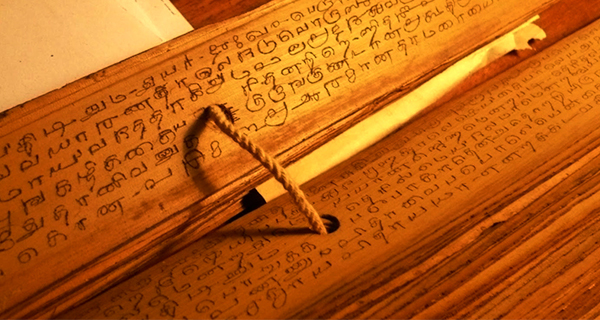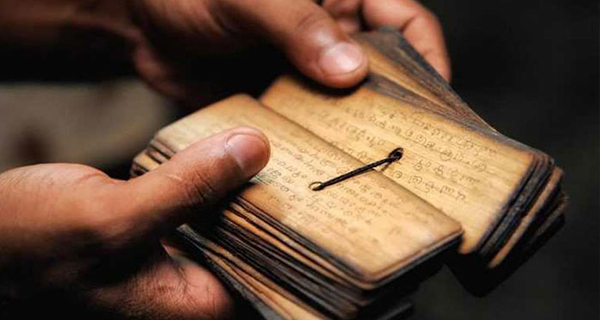 KARKA KASADARAK KARPAVAI…… (WHAT EDUCATION MEANS - A PERSPECTIVE FROM THIRUKKURAL)
KARKA KASADARAK KARPAVAI…… (WHAT EDUCATION MEANS - A PERSPECTIVE FROM THIRUKKURAL)In the last few centuries, many theories have been proposed with regard to the process of learning. Some of them are based on the psychological foundations, others on philosophical foundations, a few others on geo-political and other sociological foundations. A number of theories have also been an outcome of some of the perceptions, researchers and educators had developed based on their personal observations, experiments, findings, life-experiences and other modes of growth as well as conditioning of the human mind and spirit. The early Indian literature in Sanskrit has also enough of philosophical and psychological inputs that help us to understand learning and education in the Indian context. They are outcomes from intense deliberations of vibrant human minds in search of a self-identity and social consciousness. Philosophies and pedagogies have been shaped, time to time, based on the aims and objectives of the contemporary societies.

Tiruvalluvar, a renowned Tamil poet and architect of “Thirukkural” – authored between 450-500 ECE, which comprises of 1330 Kurals (couplets) is considered as “Podhu marai” – a spiritual document that which appeals to a range of people from the intellectuals to the common men, discusses several dimensions and facets of life, under three broad heads – aram ( dharma, righteousness) porul, (Wealth) kamam (Love). His brief but, powerful statements on several issues are sharp, precise and focused. They convey meanings and messages which impact not only the thought patterns of people but their emotions and consequent life systems. They are a delight to curious human minds of all ages and carry an eternal value.
Speaking about education, one of the couplets of Thirukkural possibly encompasses in itself the power of several philosophies of education, if understood clearly. The Kural reads as follows:
"கற்க கசடறக் கற்பவை கற்றபின்
நிற்க அதற்குத் தக.”
The above couplet has a deep-rooted meaning which could relate to all societies, all economies, all geographies and at all periods of time
The first word of the couplet “Karka” is a verb – that could be interpreted as an instruction, a message, a pastoral statement or as the wisdom emanating from a scholarly mentor. It means “Learn”. By saying so, the great saint clearly focuses on the process of ‘learning’ indicating in clear terms that the onus of learning is on the learner. Any amount of resources, inputs a learner may have at his behest, unless he has a curiosity to learn, unless he is willing to learn, unless he has set his priority as ‘learning’, no external sources could impact the individual. Thus, the learner is left with absolutely no choice but to engage with the process of learning. Just focusing on the action, the saint delinks the source and the strategies that would lead to learning. It could be formal, informal, incidental, accidental or otherwise. The learner enjoys the freedom of action both as individual and as a member of a society. Further, the word focuses on the ‘process of learning’, thus marginalizing the learner and the source of learning, shifting the paradigm to ‘learning-centric’ behaviour. Thus, this single word conveys three important messages – direction, action and engagement. It explains that the nucleus of the entire process of education is ‘learning’ -thus setting the right priorities for the learner.
Through the second word “Kasadara” – the great saint-poet, takes the learner to a very significant domain in the process of learning. How does one learn? Learning is not a superficial engagement with some amount of information. It is not ‘rote learning’. It is an immersive activity. While ‘learning’ one dives deep into unfathomed oceans of knowledge and unravels the mysteries that each piece of knowledge hosts. “Kasadara” means – without any flaw, thoroughly. This focuses on authentic learning, learning which is insightful, learning which is not shadowed by any myths or belief systems which are born out of imprudence. The poet calls for a process of learning which is pragmatic, sublime and knowledge which is valid, credible and non-negotiable. This would be possible only if the learner is passionate with the assignment one has on hand. This passion is born out of the joy with the engagement. At the same time, it demands some responsibilities from the learner – to differentiate the truth from untruth, the relevant from the irrelevant and the right from the wrong. This calls for a fearless encounter with knowledge and oftentimes to challenge the resources from which the learning happens.
The learner has been advised – to learn, and to learn without flaw. But the learner has a question in mind. What should I learn? The learner is not only confused about what one should learn, but finds oneself in a situation of conflict on the right choice of the disciplines for learning. The choice of words to explain this situation by Thiruvalluvar is awesome. He understands that learning is impacted by interests, choices and aptitudes. So, the freedom to learn should be vested with the learner. He cleverly avoids giving any suggestion to the universe of learning. “Karpavai” meaning “whatever one has to learn”. This gives a great freedom of choice to the learner, but having chosen the universe of learning by force or any external stimuli. One has to be passionately engaged with the process in order to gain flawless knowledge. Further, while making the choice of one’s universe of learning, the learner has to exercise caution as to ‘what one should choose to learn.” The word ‘karpavai’ directly and indirectly implies that one need not learn everything that is available as piece of knowledge. Its personal value, social value, ethical value, pragmatic value has to be considered before making the choice. Thus, one finds again the ‘responsibility’ for the universe of learning is vested with the individual learner. Further, the word “Karpavai” suggests that in the universe of learning, there are a number of things which need not be learnt or are not worth learning. Hence the learner has to prudently and consciously choose his domain of learning and should not get distracted by other temptuous domains of learning.
The great saint does not stop with his guidelines for learning. After all, every learning has an impact and it does result in a behavioural change. So, the question remains – what is the objective of learning? Is it to increase one’s material wealth or are there other things which need to be addressed consequent to the learning?

In the second line of the couplet, he ventures to explain the same. “katra pin” – “after learning” – what is to be done? Any piece of knowledge is of no use if it is not put into use. However, how does one use the knowledge gained, depends on certain personal choices as well as social compulsions and expectations. Because of any fear or hesitation or reservation, one cannot go into a ‘mute mode’ after learning. There are certain obligations to the learner to discharge, in terms of one’s gratitude to the society which has facilitated this human empowerment. The entire course of life has to reflect the wisdom of one’s learning. The learning should help the learner to be a part of a creative community, to create for the needs of the future,
So, what does one do after learning?
“Nirkka” meaning “stand” – position yourself, says the poet. The position a learner designs, articulates and awards oneself should reflect the wisdom, the maturity, the experience and the information one has acquired during his long journey of learning. Instead of saying, what are the things one should do subsequent to learning, the poet again gives the responsibility to the learner. One must learn how to position oneself and this calls for a high degree of social consciousness, skills in relationship management, a deep insight into one’s operational geography and one’s own desire and direction for further growth.
In a world which is increasingly consumerist, where cutting edge competition matters, where people would like to seek and acquire positions whether one deserves it or not, where people would like to misuse, abuse and profuse through positions in which they are placed, the words of Thiruvalluvar have a powerful message. He says “atharkkuth thaga” – meaning “appropriate to the learning one has got”. In other words, if one is not going to reflect ethics, life skills, wisdom, maturity and intellectual and emotional skills one has acquired through learning, then the entire exercise of learning becomes useless, irrelevant and unproductive.
In the entire exercise of the explanation of learning, the poet-saint does not talk of any achievement or reward as the goal or aim of learning. The definition distances itself from any competitive learning or comparison between individuals as a result of learning. Learning is a personal empowerment of a vibrant human being and the individual should seek to learn to understand the meaning of life both in the personal as well as universal context. The definition, thus, rejects the modern perspectives of learning, largely aimed at bread and butter aim, and on certification of learning through certain minimal.
Through a small couplet (Kural), Thiruvalluvar, has been able to focus on several of the established philosophies and concepts deliberated in the current and the past century. Further, the Kural, also both directly and indirectly refers to all the four pillars of learning postulated for the 21st century by UNESCO in its document ‘Learning: The Treasure Within” – “Learning to Know; Learning to Do: Learning to get Together; Learning to Be.” Certainly, this Thirukkural focuses on – the need for knowledge, the process of acquisition of knowledge, the authenticity of knowledge, the action born out of knowledge, the positioning of the learner subsequent to knowledge acquisition in a social set up and learning to celebrate the self.
Image courtesy:https://www.pillaicenter.com/blog/wp-content/uploads/sites/4/2019/03/Nadi-Leaves-800x423.jpg
Image courtesy:https://data.whicdn.com/images/319419925/original.jpg?t=1537052692
Image courtesy:https://atma.hr/wp-content/uploads/2013/04/vede-1.jpg